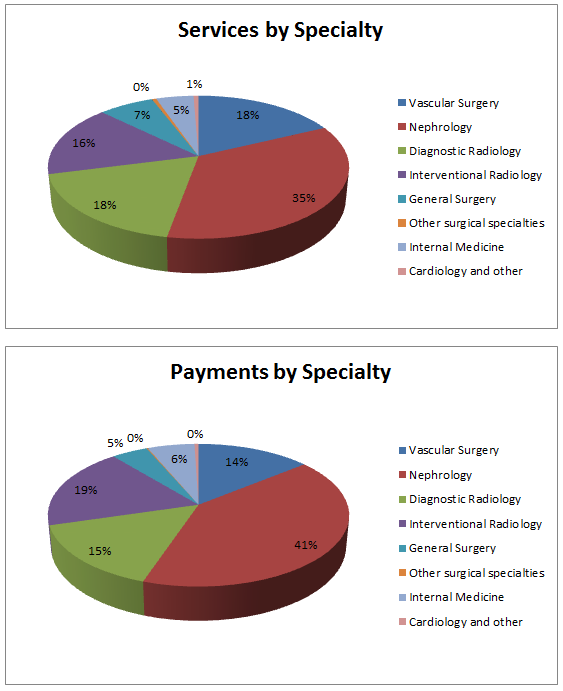Dialysis Access Maintenance Practice Patterns In The Medicare Population
William W. Sheaffer, MD, Samuel R. Money, MD, Victor J. Davila, MD, William M. Stone, MD, Matthew D. Breite, MD, Ina Y. Soh, MD, Andrew J. Meltzer, MD.
Mayo Clinic in Arizona, Phoenix, AZ, USA.
OBJECTIVES: Dialysis access maintenance procedures are performed by varying specialties depending on the regional and institutional practice patterns. The objective of this study was to assess the current state of dialysis access procedures specifically evaluating provider specialty, site of service, and variation in practice. METHODS: The 2017 Medicare physician utilization database was queried for the newly created dialysis access CPT codes (36901-36909). Services, payments, provider specialty, and geographic data were collected. Services and payments from advanced practice providers and facilities were removed from the analysis. RESULTS: In 2017, physician providers performed 340,626 maintenance services for total payments of $297M in the Medicare population. Nephrology performed 35% of all services, radiology specialties 34%, vascular surgery 18%, general surgery 7%, internal medicine 5%, other surgical specialties 1%, and cardiology/other 1% (Figure 1). Nephrology also accounted for the highest proportion of payments (41%) whereas vascular surgery received only 14% of total payments. Internal medicine most frequently performed these procedures in an office setting 93%, followed by nephrologists 90%, interventional radiology 75%, other specialties 69%, vascular surgery 58%, diagnostic radiology 53%, general surgery 41%, and other surgical specialties 15%. Overall 94% of payments were for office based procedures. CONCLUSIONS:
Dialysis access creation and maintenance account for nearly 10% of a vascular surgeon's practice in the Medicare population. As maintenance procedures become further office based and percutaneous arteriovenous fistula creation is adopted, the future of vascular surgeons' involvement in access creation and maintenance procedures remains uncertain. 
Back to 2020 ePosters
